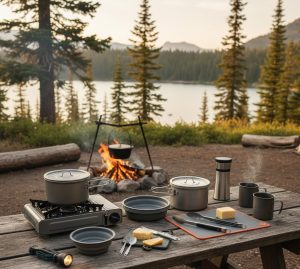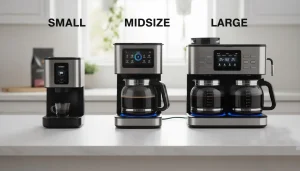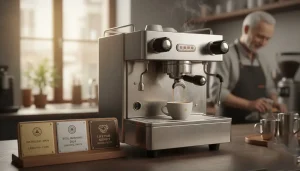I’ve worked in digital content long enough to know that nobody wants endless fluff when they’re searching for a kitchen appliance. Cooking tools for camping You want facts, practical advice, and maybe a little humor to break up the technical talk. That’s exactly what I’ll deliver here.

Microwaves are not glamorous. They don’t inspire dinner parties or foodie Instagram reels. But they matter. A dependable microwave saves time, reheats leftovers without leaving cold spots, and sometimes even replaces your stove when life gets busy.
Before diving deep, let’s keep it neat with a quick preview.
What you’ll learn here
- How to choose the right size.
- Why wattage matters more than marketing buzz.
- Features worth paying for (and which to skip).
- Models that stand out in recent testing.
- Cleaning and maintenance hacks.
- Reliability and longevity tips.
- Energy efficiency and cost-saving notes.
- A little look at what the “future microwave” may look like.
Why I wrote this
I’ve reviewed test results, sifted through buyer surveys, and compared popular models. Cooking tools for camping My goal is simple: to help you pick a microwave that actually fits your kitchen and daily life. I’m not pushing luxury models or the cheapest gadgets just to fill space. I’m aiming for real value.
Let’s start with size — small, midsize, and large

The first decision is always about space and use. Not every kitchen can accommodate a monster-sized microwave.
- Small (~0.7 cu ft): Great if your counter space is tight or you’re outfitting a dorm, office, or studio apartment. These are slower, but they’ll handle a plate of leftovers.
- Midsize (1.0–1.3 cu ft): The sweet spot for most families. Big enough for dinner plates, casseroles, and frozen meals. Usually the best balance of speed, features, and affordability.
- Large (1.4–2.2 cu ft): Think family meals, large dishes, and faster cooking. They often come with advanced features like sensors and pre-programmed cooking modes.
My tip: Measure your plates. If they don’t fit comfortably, you’ll regret the purchase — no matter how “top-rated” the model is.
Power levels and what they mean
The wattage of a microwave is not just a number for the spec sheet. It determines how quickly and evenly your food heats.
- Under 800W: Basic reheating. Works, but expect slower times.
- 800–1,000W: The comfortable middle ground. Strong enough for most households.
- 1,000W+: Fast and powerful. If you’re impatient (like me on a hungry day), go higher.
The lab tests I reviewed show that higher wattage doesn’t always equal perfection, but it usually improves speed and reduces cold spots.
Features worth paying attention to
I don’t care much about flashy buttons. I look for features that actually make cooking easier.
- Sensor cooking: A winner. It measures steam and stops at the right time. No more burnt popcorn.
- Defrost modes: Handy for meat and frozen meals. Look for even defrosting scores in reviews.
- Turntable or flatbed: Turntables are common and help with even cooking. Flatbeds maximize space for odd-shaped dishes.
- Noise level: An underrated feature. A quieter microwave is worth more than you think.
- Child lock: A must for homes with curious little hands.
Features like “50 preset menus” are mostly wasted space.Cooking tools for camping I’d rather rely on my own timing and a reliable sensor.
My short list of models worth checking
From the most recent testing I’ve studied, here’s how some popular brands stack up:
- Commercial Chef (budget models): Affordable, decent evenness, slower than others. Good for offices or backup use.
- Danby (small): Quiet, reliable, no fancy sensors. Solid for simple reheating.
- Breville (midsize Smooth Wave): Great on defrosting and noise. Mixed on evenness. Stylish but pricier.
- GE (midsize): Strong at defrosting and quiet operation. Average speed.
- LG NeoChef (large): A standout with excellent heating, evenness, and sensors.
- Panasonic (large models): Consistent high performance on speed and evenness. A good choice if you cook often.
I’m not saying these are the only choices. But they consistently show up with solid scores in independent testing.
The budget vs premium debate
Should you spend $80 or $400? Here’s my take:
- If you just need to warm leftovers or coffee, a budget option will do fine.
- If you regularly cook or reheat full meals, a midsize or large unit with strong wattage and sensors is worth the higher price.
- Premium models sometimes add style — stainless steel finishes, sleek touchpads — but performance differences are often modest.
Funny truth: A $100 unit can sometimes beat a $300 one in speed or evenness. Always check test scores, not just the price tag.
Energy efficiency and running cost
Microwaves are generally efficient, but there are differences.
- Larger units with higher wattage use more power but save time.
- Shorter cooking times can offset the higher wattage usage.
- Keeping the unit clean improves efficiency (yes, that layer of pasta sauce splatter is not helping).
Tip: Cooking tools for camping if you’re reheating something small, cover it. Covered food warms faster and uses less energy.
Maintenance and cleaning hacks

Here’s how I keep mine working well:
- Quick wipe after use: Stops stains from baking on.
- Steam clean trick: Heat a bowl of water with lemon slices for 3–5 minutes. The steam loosens gunk.
- No metal ever: Foil, forks, and mugs with gold rims are microwave enemies.
- Check the door seal: A clean, tight seal prevents leaks and ensures efficiency.
- Replace damaged plates: A cracked turntable can cause uneven heating.
It takes less than five minutes a week, but it makes a big difference.
Reliability and lifespan
Most microwaves last 5–10 years. Reliability varies by brand. Panasonic and LG often rate well for user satisfaction, while some budget models may lose efficiency sooner.

If a microwave suddenly makes odd noises or smells like burning plastic, retire it. Don’t gamble with faulty electronics.
A little humor break
Microwaves are basically kitchen time machines. In one minute, your frozen dinner jumps from the Ice Age to piping hot. Just don’t forget to stir halfway unless you enjoy the “volcano edges and ice block center” effect.
What about future microwaves?
Smart technology is creeping into kitchens. Some models now link to apps or voice assistants. Is it necessary? Not really, unless you enjoy telling Alexa to heat your coffee.
I predict we’ll see more AI-driven sensors that adjust heating times automatically, and even microwaves that recognize food types. Until then, I’ll stick to pressing “30 seconds” multiple times like everyone else.
FAQs (short and straight)
Q: Can I build a countertop model into a cabinet?
A: Only if it’s designed with a trim kit for ventilation. Otherwise, no.
Q: Do I need convection in a microwave?
A: Only if you plan to bake or crisp. Most people never use it.
Q: How often should I replace my microwave?
A: If it’s over 10 years, struggling to heat, or sparking — time to upgrade.
Q: Is a small microwave enough for two people?
A: Yes, if you mostly reheat small meals or drinks. For bigger dishes, midsize is safer.
My final advice
If you’re unsure, aim for a midsize model around 1.1 cu ft with about 1,000 watts and a sensor function. That covers most everyday needs.
Choose small only if your counter space is limited. Choose large if you cook or reheat full meals often.
And if you like blending soups or baby food, you might find my guide on the puree blender useful too.